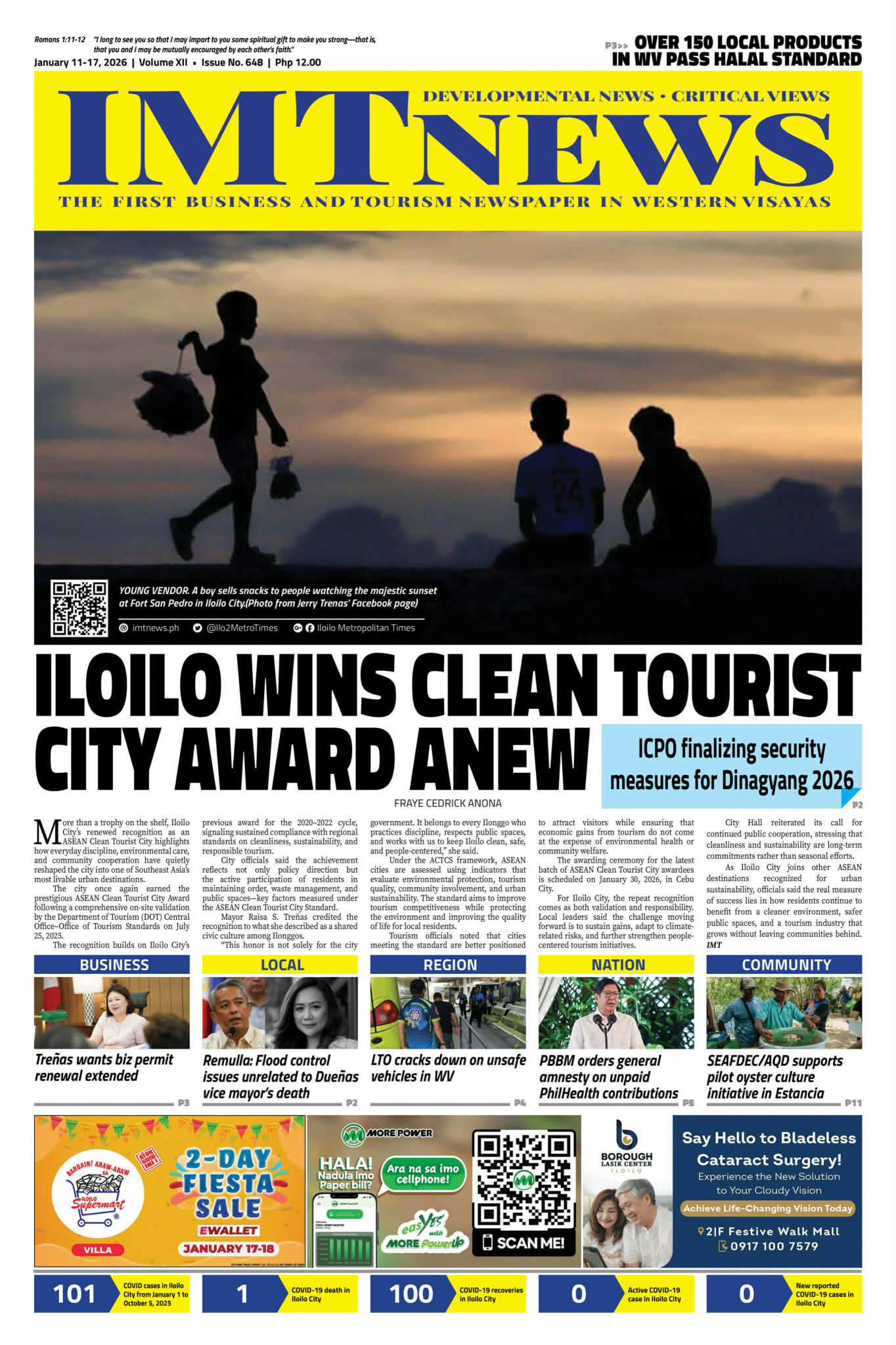We’ve heard of revenge travel at the height of the pandemic lockdown two years ago, and it promised better days for the badly hit tourism industry.
Fast-forward to the end of 2022. The Dept. of Tourism reported 2.6 million international arrivals, which translated to around P208 billion in revenues. These figures reflect the preliminary assessment of Tourism Secretary Christina Frasco that the tourism recovery is promising.
Since the reopening of borders and lifting of health restrictions last year, however, the quality of service in some of the primary and secondary tourism establishments has remained below par, as observed by many travelers. This is noticeable in the slow turnaround time at restos, dining places, and accommodations. It highlights the issue of a lack of workers during this critical period of recovery.
Last March 28, Dept. of Tourism (DOT-VI) regional director Crisanta Marlene P. Rodriguez and the Dept. of Labor and Employment (DOLE-VI) assistant regional director Atty. Dax B. Villaruel presented the regional leg of the Philippine Tourism Job Fair, “Turismo-Trabaho-Asenso”.
The job fair intends to “link workers adversely displaced during the height of the pandemic some two years ago, and considering employment opportunities in the recovering tourism industry.” The job fair offered 2,279 job openings from 40 employers, the majority of which were considered allied tourism services rather than primary and secondary tourism establishments, where workers are most needed at this time.
After the job fair, one of the tourism stakeholders quipped a comment to this writer, saying that DOT-VI needs a more substantial intervention if the agency is serious about addressing the employment gap. Further inquiry to various stakeholders reveals that many tourism establishment owners remain hesitant to hire workers because of a host of problems carried over from the pandemic, which range from needed additional capital down to labor and health issues.
Employment data was one of the questions I asked the two regional officials during the press conference, aiming to anchor the jobs fair as an initiative that responds to the employment needs of the tourism sector. Unfortunately, there was no data to show how many workers were displaced by the pandemic, if there is tracking on their transfers to other sectors, or if these workers are recoverable for reintegration into the tourism industry.
Western Visayas perhaps mirror the positive development as far as revenge travel is concerned. In January, DOT-VI shared the partial tourist arrivals for 2022, which showed a 109 percent increase, from 1,167,453 (2021) to 2,887,767 (2022), and a total receipt of P37.87 billion.
Behind the rosy numbers, however, are narratives by business owners that help explain why a lack of workers is a feature of the recovery period. The lack of personnel will keep on, said one resort owner, for we are still recovering from the loss of profits caused by the health crisis. Profits from current operations are being used to pay debts. Hiring new personnel is not a top priority at this time because we are trying to maintain low overhead and that includes labor cost.
In addition, establishment owners are taking careful steps when it comes to hiring new personnel, owing to the trauma caused by the messy retrenchments that displaced even the most valuable and loyal employees during the lockdown.
Business closures mean no profit and no money to pay salaries and benefits to employees. We lost around 90 percent of our employees because of that, said one resort owner, and we are operating now with family members and relatives as helpers. Hence, we have scaled down our operations, and that includes a manageable food menu because of the absence of a cook. We are struggling to recover, he added, and probably we will slowly hire additional helpers next year.
These are important narratives that may help explain why the low participation of tourism business owners at the job fair, which is not captured by the customary reporting of statistics by DOT-VI—those numbers that create the good news—breached annual target tourism arrivals, exceeded target receipts despite being the lowest funded agency of the national government, and so on.
This is not to say that statistics are not newsworthy; these are important numbers, yet they need a qualitative component. A report with a quantitative and qualitative dimension is not spoon-feeding, but it will help us develop a better appreciation of their work. It will also enrich the quality of reporting, for it will allow us to report on the effectiveness or ineffectiveness of its investments in programs like the Philippine Tourism Job Fair.
If the DOT is breaching targets despite the lack of workers at primary establishments on the ground, then what more if the right number of workers are in place? The disproportionate number of workers versus establishment capacity and demand results in inefficiency in the delivery of services at various levels, which affects the quality of the traveler’s experience.
Isn’t it true that travel is about gathering meaningful experiences? And quality of experience has become an important narrative for post-pandemic tourism. Insufficient reporting of DOT-VI creates an incomplete, if not artificial, picture of the regional tourism situation. The case of the lack of data in connection with the job fair and the issues brought out by tourism establishment owners in relation to tourism jobs demonstrate this point.
A successful tourism recovery program needs workers. But where are the jobs? Where are the workers?


![[EDITORIAL] A prayer](https://www.imtnews.ph/wp-content/themes/Extra/images/post-format-thumb-text.svg)
![[OPINION] Boy Mejorada’s SC conviction](https://i0.wp.com/www.imtnews.ph/wp-content/uploads/2019/09/P1568631978_featured_img.jpg?resize=440%2C264&ssl=1)


